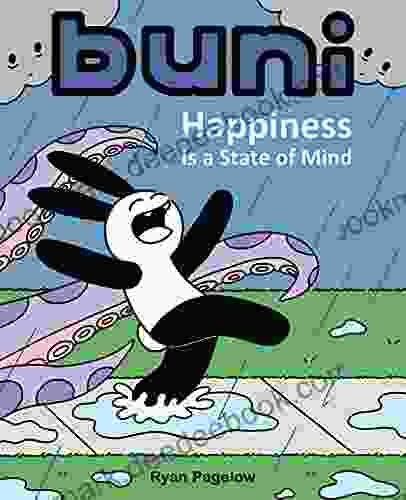Diagnosis, Routines, Management, and Survival Strategies for Sensory Difficulties

4.2 out of 5
| Language | : | English |
| File size | : | 1455 KB |
| Text-to-Speech | : | Enabled |
| Screen Reader | : | Supported |
| Enhanced typesetting | : | Enabled |
| X-Ray | : | Enabled |
| Word Wise | : | Enabled |
| Print length | : | 94 pages |
| Lending | : | Enabled |
Understanding Sensory Difficulties
Sensory difficulties arise when individuals experience difficulties processing sensory information from their environment. These difficulties can manifest in various ways, affecting an individual's ability to interact with the world around them. Common symptoms of sensory difficulties include:
- Hypersensitivity to certain stimuli (e.g., loud noises, bright lights, strong smells)
- Hyposensitivity to certain stimuli (e.g., lack of response to pain, difficulty feeling textures)
- Difficulty regulating sensory input (e.g., fidgeting, seeking out sensory experiences)
- Poor sensory integration, leading to challenges with motor skills, coordination, and balance
Diagnosis Process
Diagnosing sensory difficulties typically involves a multidisciplinary approach involving professionals such as pediatricians, occupational therapists, and speech-language pathologists. The diagnosis process may include the following steps:
- Initial assessment: The healthcare provider gathers information from the individual and their family regarding symptoms, developmental history, and medical history.
- Observation: The healthcare provider observes the individual's behavior and interactions in different sensory environments.
- Sensory processing evaluation: The healthcare provider uses standardized tests and assessments to measure the individual's sensory processing abilities.
- Differential diagnosis: The healthcare provider rules out other underlying medical conditions or developmental disorders that may contribute to the sensory difficulties.
Establishing Routines
Establishing routines can provide a predictable and structured environment for individuals with sensory difficulties. Routines can help reduce sensory overload and anxiety by providing a sense of predictability and control. Here are some tips for creating routines:
- Establish a regular daily schedule for activities such as meals, sleep, and play.
- Create a sensory-friendly environment by minimizing potential triggers and providing soothing sensory inputs.
- Use visual aids and schedules to help individuals anticipate upcoming events and transitions.
- Provide opportunities for individuals to participate in sensory-rich activities that they enjoy and find calming.
Effective Management Strategies
Effective management strategies for sensory difficulties involve tailoring interventions to the individual's specific needs. Some common strategies include:
- Sensory integration therapy: This therapy aims to improve the brain's ability to process and integrate sensory information.
- Occupational therapy: This therapy focuses on improving daily living skills and participation in meaningful activities despite sensory challenges.
- Speech-language therapy: This therapy can address communication difficulties related to sensory processing.
- Medication: In some cases, medication may be prescribed to manage specific sensory symptoms, such as anxiety or sleep disturbances.
Coping Mechanisms for Individuals and Families
Coping with sensory difficulties can be challenging for both individuals and their families. Here are some coping mechanisms that can provide support:
- Education: Understanding the nature of sensory difficulties and effective management strategies can empower individuals and families to cope better.
- Self-regulation techniques: Individuals can learn techniques such as deep breathing, mindfulness, and body scans to manage sensory overload.
- Sensory kits: Creating sensory kits with calming and soothing items can provide quick relief during stressful situations.
- Support groups: Connecting with other families and individuals facing similar challenges can offer a sense of community and support.
Sensory difficulties can impact an individual's life in various ways. By understanding the diagnosis process, establishing routines, implementing effective management strategies, and fostering coping mechanisms, individuals and families can navigate these challenges and live fulfilling lives. It is important to remember that every individual experiences sensory difficulties differently, and tailoring interventions to their unique needs is crucial for success.
If you suspect that you or someone you know may be experiencing sensory difficulties, do not hesitate to seek professional help. Early diagnosis and intervention can make a significant difference in improving the quality of life for individuals with sensory processing challenges.
4.2 out of 5
| Language | : | English |
| File size | : | 1455 KB |
| Text-to-Speech | : | Enabled |
| Screen Reader | : | Supported |
| Enhanced typesetting | : | Enabled |
| X-Ray | : | Enabled |
| Word Wise | : | Enabled |
| Print length | : | 94 pages |
| Lending | : | Enabled |
Do you want to contribute by writing guest posts on this blog?
Please contact us and send us a resume of previous articles that you have written.
 Novel
Novel Page
Page Chapter
Chapter Genre
Genre Reader
Reader Library
Library Paperback
Paperback Newspaper
Newspaper Paragraph
Paragraph Sentence
Sentence Bookmark
Bookmark Shelf
Shelf Bibliography
Bibliography Foreword
Foreword Preface
Preface Synopsis
Synopsis Annotation
Annotation Footnote
Footnote Manuscript
Manuscript Library card
Library card Narrative
Narrative Biography
Biography Memoir
Memoir Reference
Reference Encyclopedia
Encyclopedia Character
Character Resolution
Resolution Librarian
Librarian Card Catalog
Card Catalog Archives
Archives Research
Research Lending
Lending Academic
Academic Special Collections
Special Collections Literacy
Literacy Dissertation
Dissertation Storytelling
Storytelling Awards
Awards Book Club
Book Club Textbooks
Textbooks Mariana Souto Manning
Mariana Souto Manning Yasmin Akhtar
Yasmin Akhtar Frank Koonce
Frank Koonce Blair Bancroft
Blair Bancroft Torin Monahan
Torin Monahan Ella Jade
Ella Jade Jill Rubalcaba
Jill Rubalcaba Greta Blash
Greta Blash Anthony Marra
Anthony Marra Scott Shaw
Scott Shaw Chris Coelho
Chris Coelho Jo Ann Petrucci Andrews
Jo Ann Petrucci Andrews Christina Ochs
Christina Ochs Carol Jessop
Carol Jessop Mark Frost
Mark Frost Sean Monaghan
Sean Monaghan Mary Mcthomas
Mary Mcthomas James M Doran
James M Doran Kelly Carrein
Kelly Carrein Lisa Bonham
Lisa Bonham
Light bulbAdvertise smarter! Our strategic ad space ensures maximum exposure. Reserve your spot today!
 John GreenFollow ·16.3k
John GreenFollow ·16.3k Brett SimmonsFollow ·8.9k
Brett SimmonsFollow ·8.9k Herman MelvilleFollow ·8.2k
Herman MelvilleFollow ·8.2k Leslie CarterFollow ·5.2k
Leslie CarterFollow ·5.2k Eddie BellFollow ·14.4k
Eddie BellFollow ·14.4k Lawrence BellFollow ·3.2k
Lawrence BellFollow ·3.2k Brenton CoxFollow ·8.4k
Brenton CoxFollow ·8.4k Everett BellFollow ·16.5k
Everett BellFollow ·16.5k

 Oscar Wilde
Oscar WildeDon't Stop Thinking About the Music: Exploring the Power...
Music is an...

 Floyd Richardson
Floyd RichardsonSnowman Story Problems Math With Santa And Friends
It's a cold winter day, and...

 W. Somerset Maugham
W. Somerset MaughamWhat Every Classroom Teacher Needs To Know: A...
Teaching is a challenging...

 Edgar Cox
Edgar CoxTall Tales But True: A Lifetime of Motorcycling...
I've been riding motorcycles for over 50...

 Chinua Achebe
Chinua AchebeBuni: Happiness Is a State of Mind
Buni is a beautiful...

 Herman Melville
Herman MelvilleThe Arts and Crafts of Older Spain: Embodying the Essence...
In the heart of the Iberian...
4.2 out of 5
| Language | : | English |
| File size | : | 1455 KB |
| Text-to-Speech | : | Enabled |
| Screen Reader | : | Supported |
| Enhanced typesetting | : | Enabled |
| X-Ray | : | Enabled |
| Word Wise | : | Enabled |
| Print length | : | 94 pages |
| Lending | : | Enabled |












